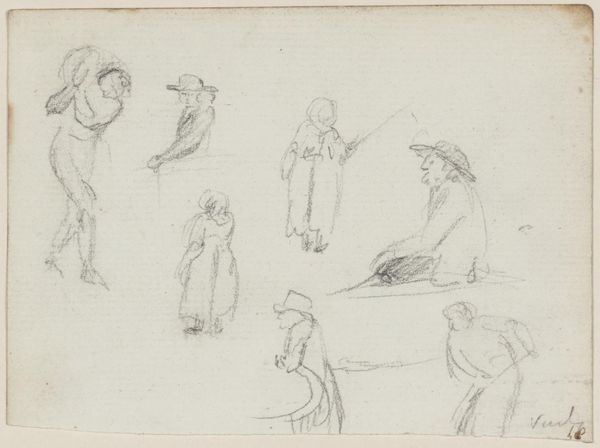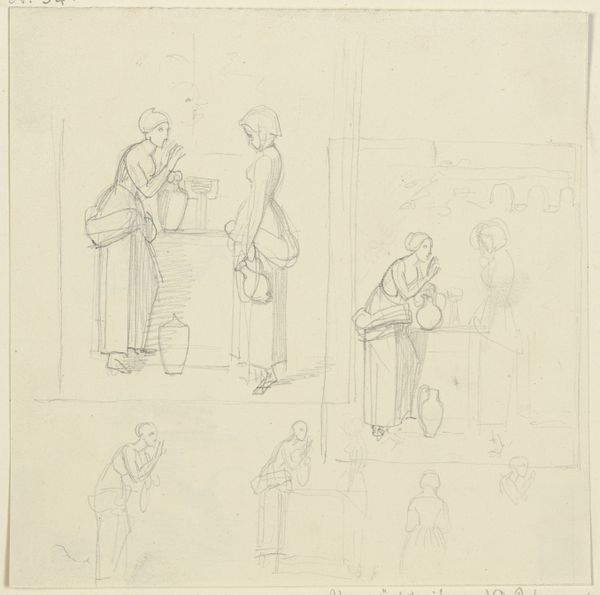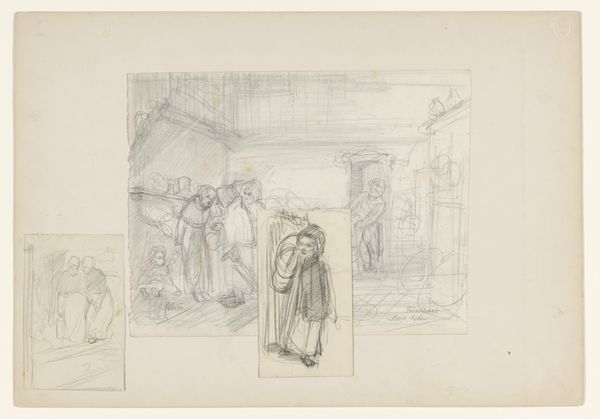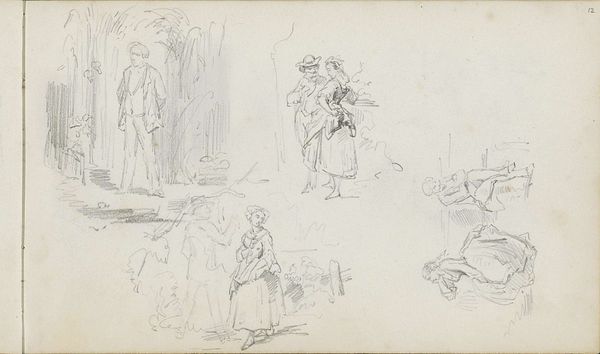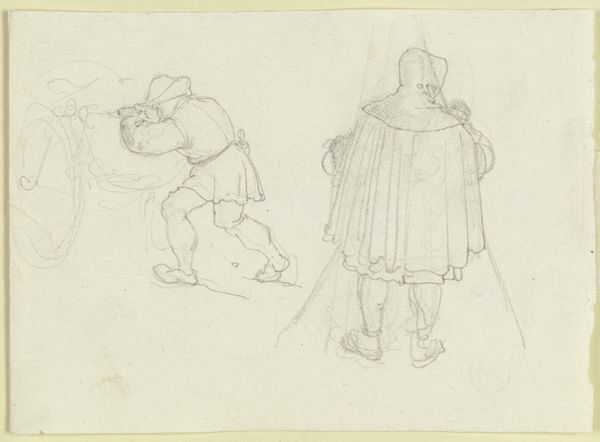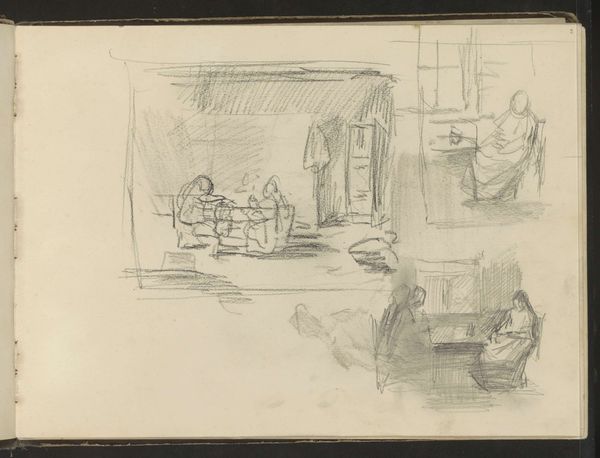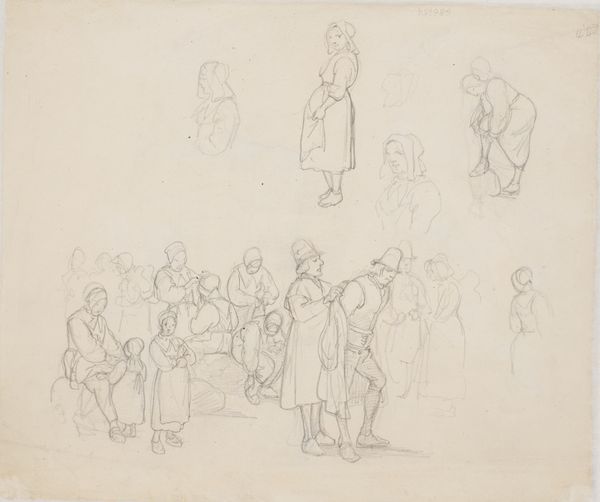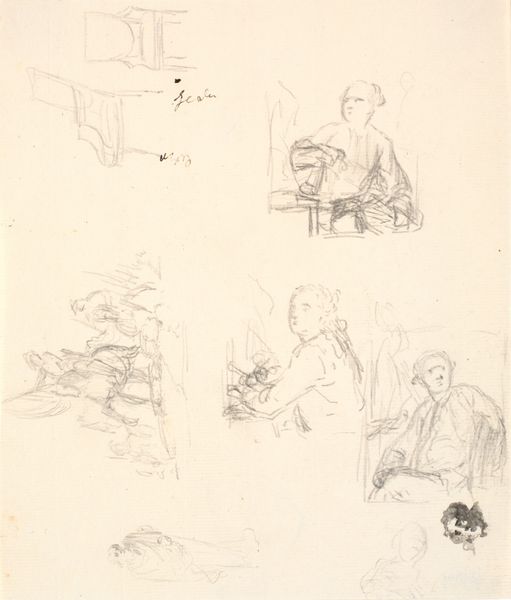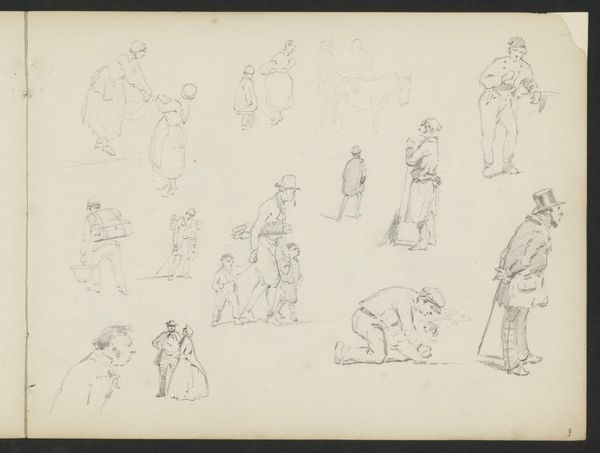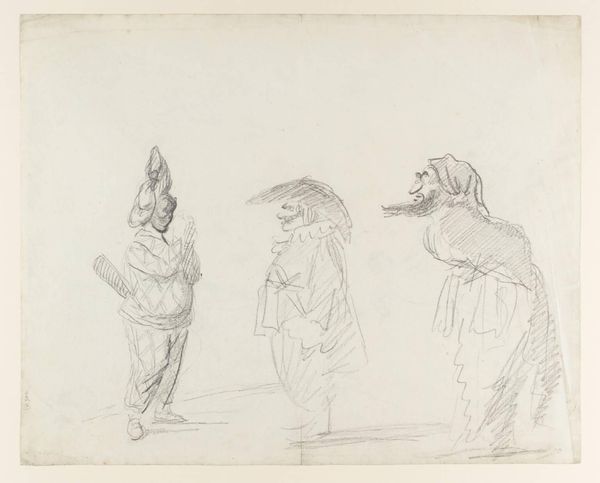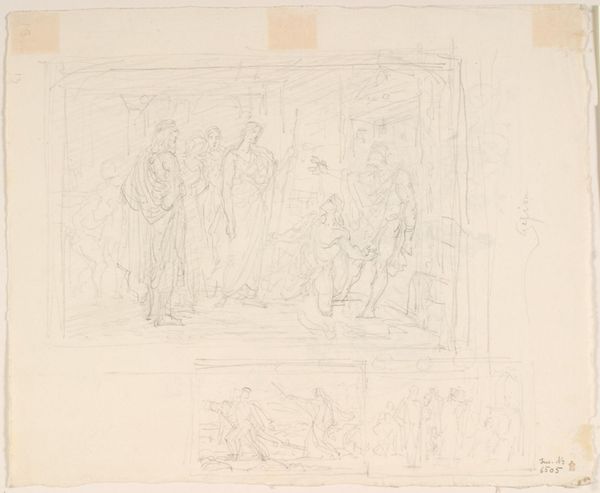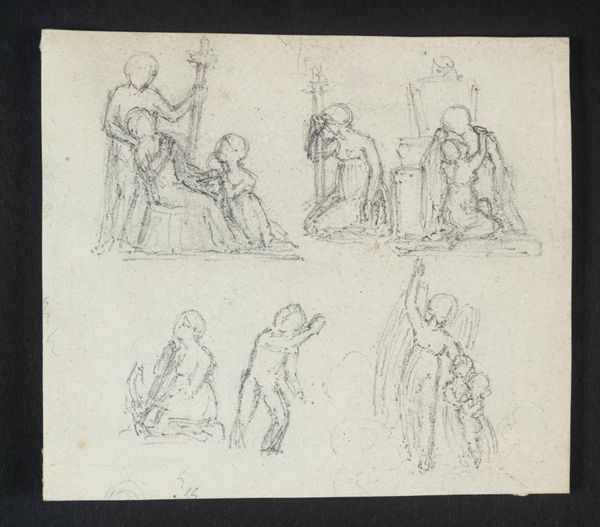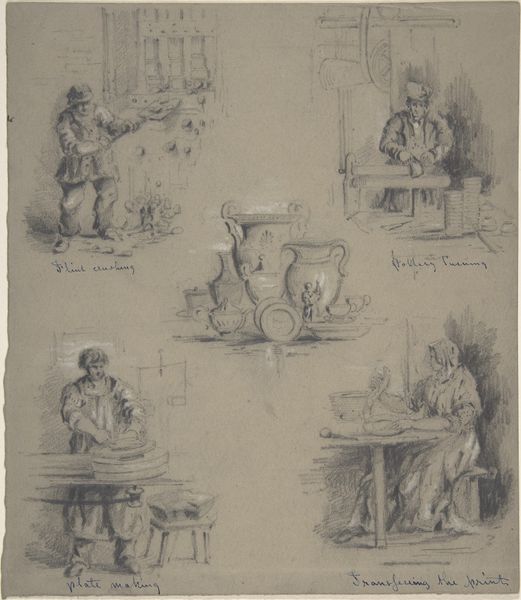
_Liebes Kindlein, ach, ich bitt, bet fürs bucklicht Männlein mit!_
0:00
0:00
drawing, ink, pencil
#
drawing
#
16_19th-century
#
medieval
#
narrative-art
#
figuration
#
ink
#
pencil
Copyright: Public Domain
Curator: Welcome. We’re standing before a drawing by Gustav Heinrich Naeke entitled "_Liebes Kindlein, ach, ich bitt, bet fürs bucklicht Männlein mit!_," a title which translates to “Dear child, I pray, pray for the hunchbacked little man!" It’s rendered in pencil and ink. Editor: Immediately, I notice the sense of melancholy, of deep introspection. The figures are depicted in what seems to be moments of prayer, set within stark, simple environments. Curator: Absolutely. Naeke, working within the nineteenth century’s fascination with the medieval, uses figuration to create a narrative piece which centers the act of religious devotion and, potentially, supplication for an other who remains unseen. Note the architectural elements—suggestive of a cloistered space, heightening the sense of austerity. Editor: And the posture of the figures… that constant kneeling! It suggests not just piety, but perhaps also a form of subjugation, a submission to some higher, potentially oppressive power. Considering this through a lens of power dynamics—are we seeing genuine faith, or forced compliance? Curator: A critical question! One could certainly argue that the piece touches on themes of institutional control and the roles prescribed, particularly for women, within such systems. There’s also an element of vulnerability, isn’t there? These figures are exposing themselves in a profound act of reliance. The title guides our interpretation to prayer, but consider the politics of visual imagery. Naeke chose the medium of pencil and ink, a choice suggesting accessibility and potentially democratizing art practices beyond traditional oil painting. Editor: I appreciate how you're framing Naeke’s artistic decisions within a broader societal context. His use of a seemingly ‘simple’ medium actually becomes a statement about access and engagement. In the current moment, thinking of the drawing within today's political climate, it makes one wonder: where do we locate power, who are the 'hunchbacked men’ now, and who is doing the praying, in both a literal and metaphorical sense? Curator: That’s such a salient point, prompting us to consider Naeke’s work not just as a historical artifact but as a potent mirror reflecting enduring social and political dynamics. Thank you for enriching our understanding. Editor: It’s been my pleasure to collaboratively explore the depths of meaning inherent within this artwork, considering not only its historical context but its continuing relevance to our contemporary world.
Comments
No comments
Be the first to comment and join the conversation on the ultimate creative platform.

